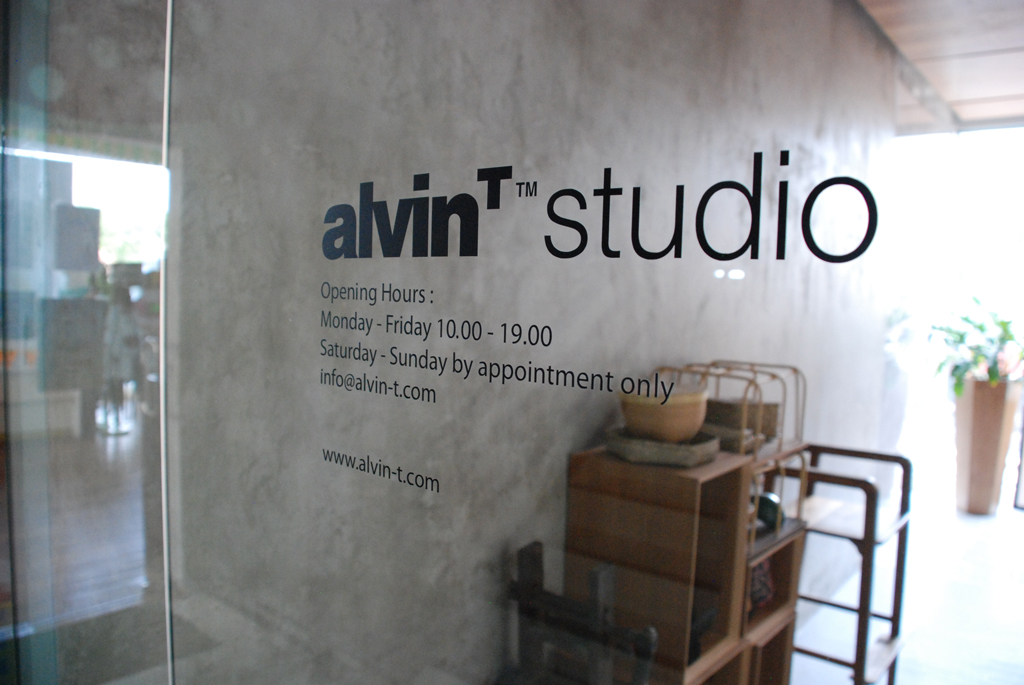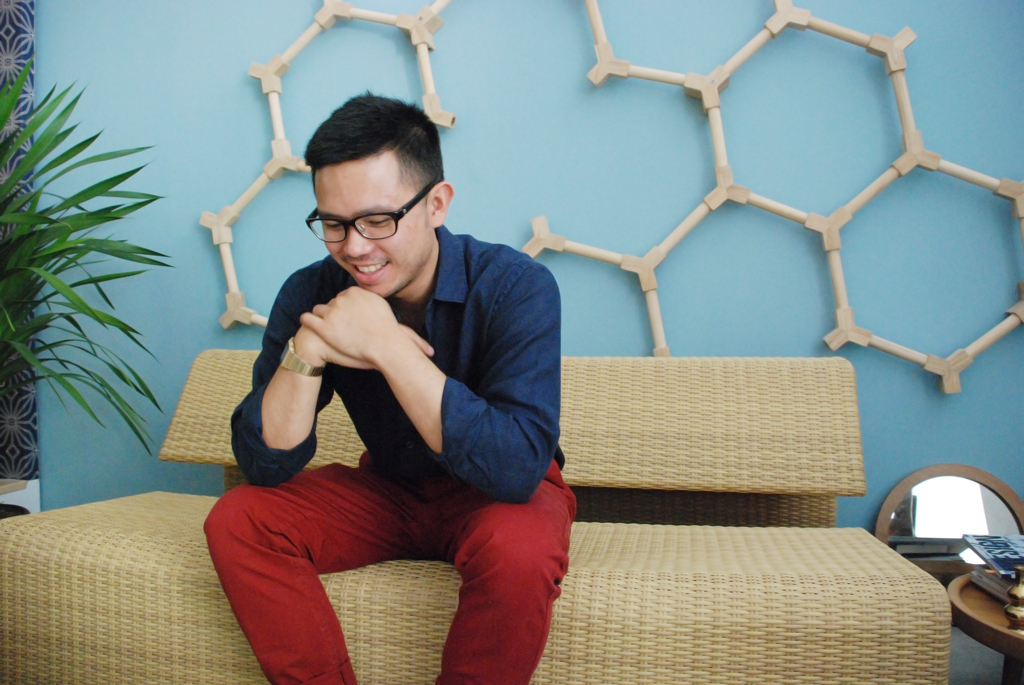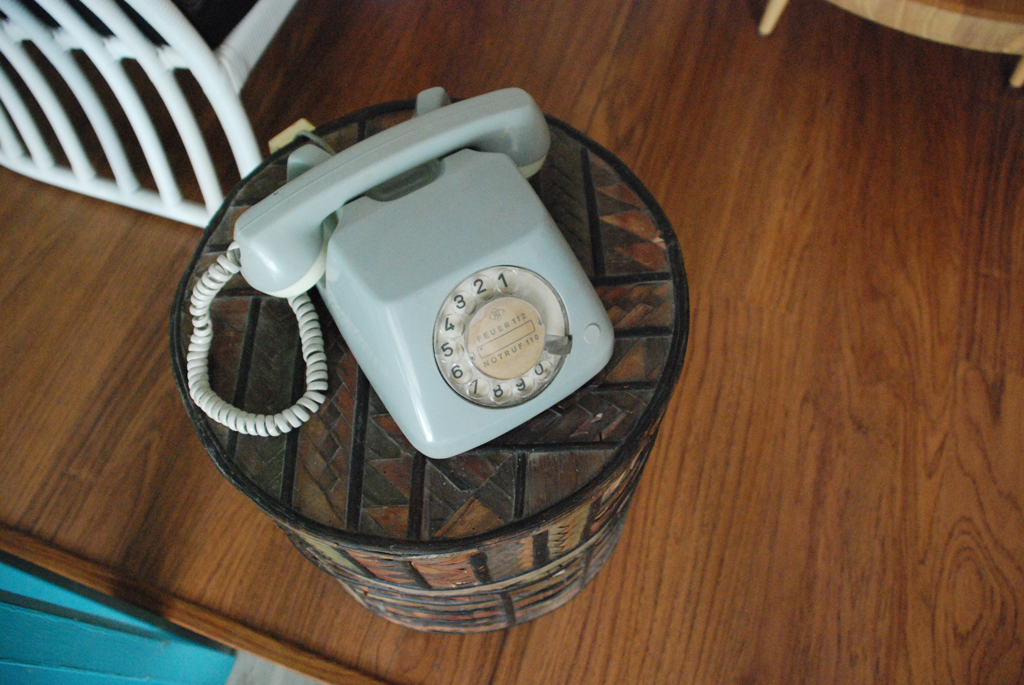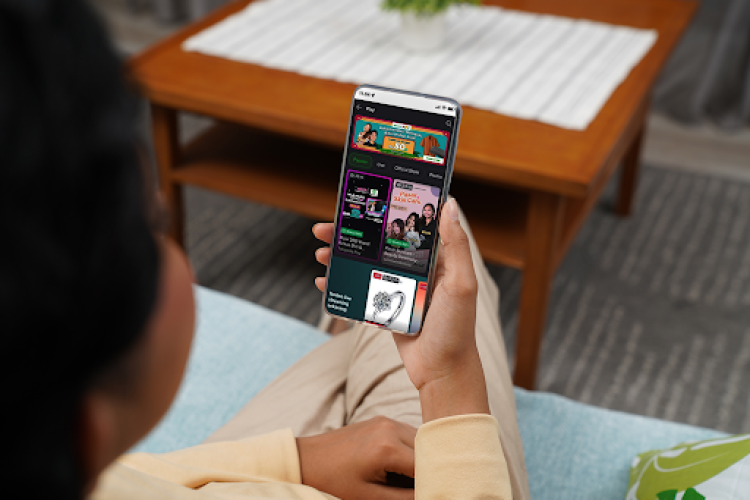Talking about Design with Alvin Tjitrowirjo
Chandra Drews (C) Interviews Product Designer Alvin Tjitrowirjo (A)
by Ken Jenie

















C
So Alvin, to kick things off, how did you get interested in design?
A
You probably already know this, from drawing cars (laughs). Anyways it started from there when I was in grade school. I really liked drawing, I don’t know why. After high school I figured out how to channel this ability. Back then I was fixated with the car industry and actually I wanted to do car design. After that I went to education exhibitions and found out that if I wanted to do automotive design, I can do product design as a base, then continue to specialize in automotive design.
C
Before we get further into your design education, did you get any influence form your parents as well?
A
No, I don’t think so. My interest in design began with my interest in cars. I saw the object as a complete product, and because I was crazy about cars I paid attention to the small details like how the buttons work and how the shape of the headlights are. So I started to like the car as a whole, but when I went to school I was taught how to make these things, how to manufacture these things, how the design really functions, and how it relates to human behavior. And I found that very interesting.
My dad is a marketing person, his way of thinking was like – this item is sold expensively because it looks like this, it serves this purpose, and that is very much related to design. I guess that’s the power of aesthetics. And other than that, of course there’s branding and marketing too, but aesthetical basics interests me.
C
Where did you study in Australia?
A
I went to the Royal Melbourne Institute of Technology (RMIT).
C
What did you major in?
A
Industrial design.
C
But you didn’t take automotive design as a specialization?
A
In the third year when I was planning on going to take automotive design, they closed down the studio due to the lack of students. When I wanted to move to another university, I wasn’t allowed by RMIT (laughs). There was no way basically. So the other option that I can actually do was to study furniture design.
C
You also have a lot of experience in Europe; you did 6 months in Madrid?
A
It was a year in Madrid and 6 months in Amsterdam.
C
So what extra stuff did you learn in Madrid?
A
Well before that I was working in Jakarta for 3 years, as I was working with a manufacturer and I did a bit of work for myself for a year and a half and then I got to work for another architect for 5 month.
C
This is before the “Alvin T” brand?
A
We had the logo since 2006, but I was hired by this architect to be part of his project. After a while it got a bit boring, because the stuff that these people did was not exciting enough for me. Then I decided to take my Masters degree – this university has branches everywhere, but the one in Madrid offered a unique Masters program, as it had a combination of workshops and travelling. While Masters degrees tend to specialize in something particular, this particular course offered many workshops for architects, filmmakers, graphic designers, fashion designer, and so on. So you get to know the industry through a wide perspective.
After completing the course, I got to learn many new things. I got to know that as a product designer I can collaborate with fashion designers and other related fields. One easy example is architecture. For instance I didn’t know that exterior building materials is something that you can collaborate with an architect, thus being part of your expertise. So that was very interesting. And the other thing I basically wanted to know is how designers in Europe think and work. I also wanted to experience how the country/continent works, how the infrastructure is like, etc. And that can only be achieved by living in Europe, something you can’t quite grasp just by reading books and so on.
C
And what did you learn from your six months in Amsterdam?
A
When I decided to go to Europe I basically wanted to expand my network. I wasn’t really pursuing the highest marks or anything like that; I wanted to get to know people within the design industry. So actually I spent more time networking compared to the actual studies. Thus I got to know stores, a few architects, and some magazines and tried to build a network. Furthermore, one of the things that make me wanted to go to Amsterdam is basically because I wanted to build my own brand. For that I needed a good mentor with a similar business model. Out of the few available I ended up working with Marcel Wanders.
C
So the AlvinT brand really took off after your return?
A
Indeed. For the six months I was there I learned that you need a proper team: a management team, a product design team, and so on. Thus I had a better idea on how a creative business should be structured. And upon my return, the Alvin T brand started: we found interns and also hired one full-time designer.
C
This when it still based in your home, right?
A
Right.
C
Basically Alvin T is two separate things, right? A furniture and interior design firm?
A
Yes, so the whole idea of this AlvinT brand is that we wanted to show Indonesia’s capability in terms of manufacturing. Well not exactly manufacturing but in terms of creating concrete and complete ideas: high quality, well made, originally designed products with local identity in a contemporary outfit if you will. We started with furniture just because I specialized in furniture, adding to the fact that the furniture industry is one of the biggest industries in Indonesia: an industry that is relatively easy to explore, sell and be absorbed by the market.
C
And Marcel Wanders had a big impact on your approach?
A
Well yeah, he was inspiring in a way that he was one of the pioneers of Dutch design and has become the template on what Dutch design is. After Wanders there were plenty of designers who are heavily influenced by him who in turn strengthened Dutch design’s identity and character. So it was natural for me to want Indonesia to have the same approach (a strong identity and character), especially because of our country’s massive manufacturing capability. But yeah, nobody has ever done proper development from idea to design to manufacture to branding.
So that idea developed into an ambition. I want to pursue this, especially after finding out that there are plenty of international brands whose products are manufactured in Indonesia. So after coming back from Holland, I decided to make a business, I sketched short and long-term plans in terms of what I should do, how the brand should more-or-less evolve, and how it should be communicated to the market.
C
So where does the interior design part fit in?
A
Well I also have an interest in interior, and that side of the business developed because one of the initial problems was that my products wouldn’t always fit into the client’s space. So I thought maybe I should design the whole space too. The very interesting thing is that this idea of trying to develop a contemporary Indonesian feel doesn’t have to be in the form of furniture only; it can be in a whole restaurant, it can be as a whole hotel, many things really. For instance I had the opportunity to set up an art installation for BMW, so at the end of the day Indonesian design with a strong identity can also be in the form of an art installation. And I think in the future this could be developed into anything.
C
I forgot if I read it or was it from a conversation with you, but at one point you said that there is a lack of importance in design sometimes in Indonesia.
A
Let’s say if we take a look at Jakarta in the past 6 years, the city has been changing rapidly, especially in terms of globalization. Before Zara came into the market, nobody knew that you can actually look decently fashionable with a budget of Rp. 1.5 million from top to bottom, but actually you can do that now.
With the inclusion of H&M and Uniqlo, you can do that with half the price or even one third of the price. So all of a sudden, design became much more accessible, and that is definitely influenced by the fashion industry. Then with the existence of the Ismaya, Union or Portico groups, all of a sudden restaurants have evolved from simply a place to eat into a space to hang out and be seen.
C
And these groups/places naturally feature good design, right?
A
Yeah and all of a sudden design becomes very important. I mean despite the willingness of people to pay or not, looking cool becomes a necessity.
C
Why do you think that is? Is because more people like you return from abroad and bringing back the aesthetics?
A
That might be one of the reasons. These new businesses are run by the younger generation. I’m still trying to figure this out as well, normally the first generation of business owners survive through primary businesses, like commodity or others: the big businesses. The second generation usually came back from Europe and such places; they are already well traveled, they’ve seen the world, and they’ve seen a more lifestyle-oriented business that works very well outside Indonesia. So I think when they came back, they want to bring a bit of that here and it seems that some of them are a success, business-wise. And I think because many of them are success stories, they expand it by educating other people.
So far the biggest influence is from the fashion and food & beverage industries. The fashion industry helps people with their appearance, while the F&B world creates the whole space and ambiance. Slowly from there, stuff like apartments and property are being influenced and in turn that creates demand for products. But the problem now is that they already know the importance of looking nice or cool, but not all have understood why they actually need to pay more to actually have that “look”.
The problem especially in Jakarta is there are a lot of copycats, once one succeeds, everyone else follows their lead. They have the idea of – they’re not reinventing the wheel, just carbon-copying it. Why do you have to invest in a lot of brilliant ideas?
C
Do you think that’s going to change?
A
Well, as long as companies like Informa exist, perhaps it’ll take some time (laughs). Because the problem is they know there is a demand for modern contemporary furniture, but as a supplier they know the Indonesian market is not ready for an original Rp.10 million dining chair, because it’s too expensive. So what they do basically is to import everything from China at one fifth or even one tenth of the price. And that creates a sort of ‘circle of death’ as all the business owners benchmark their prices based on those Informa prices. So it’s like, “Oh I can have a cool product, it’s only Rp.900k. And you want to charge me like Rp. 1.5 million, are you crazy?” It is a huge let down; it slows down the growth of local talent.
C
In that sense, do you feel like you are working here in Jakarta at the right moment to change that perception?
A
I would say it is the right moment, because the market is opening up, Indonesia’s economy is growing steadily, the level of consumption is quite high, and property is booming as well. There’s a lot of new building projects and what not, and maybe because Indonesia in general seems to be easily influenced by Western culture, all of the sudden they want a restaurant, a French bistro, Italian trattorias, everyone wants it like that. Long forgotten places like household satay places have become secondary, non-relevant places.
C
Which surely can’t be a completely good thing as well? You need to find a right balance.
A
Yes, however at the same time, more or less it’s a good time for myself. I mean when I first started in 2006, the market was still conservative. Now when the market is more open at least I already have my name out there. Hopefully in the future, when the market really opens, when they want to buy at the expected price, we can be there for them.
C
To slightly change topic. What are your favorites projects you’ve done so far?
A
This Toto project: the lavatory project is one of the most interesting projects I’ve done.
C
We can talk about this?
A
Yes, we can talk about this. So we’re designing a complete sanitary collection for Toto. So it’s toilets, sinks, faucets, and then showerheads. And it’s our first project that is properly mass-produced and it’s actually a product, instead of a single piece furniture or interior design. And it is being mass-produced and marketed in South East Asia, Australia, and the Middle East. The reach is much broader.
And it’s very interesting because it’s done at a very high volume. At the peak of its production capacity, between 1000 to 2000 latrine units can be produced per month, depending on the price range.
Maybe because this one is more expensive, maybe it can be up to 1000. They say if it is the Rp. 2 to 3 million price range, they can produce up to 2500 units a month.
C
That’s a lot of toilets.
A
Even though designing a toilet has a lot of limitations, but this is Toto’s first ever square-ish toilet. That’s something different. Just for me to find out the impact towards the market is very exciting.
C
And when is it coming out?
A
It should be out either in November or December.
C
And going back a bit, you finally did a project with BMW, so it’s sort of a dream come through in some sense?
A
Well, my dad has a little bit of connection. Well it was very exciting; it was the closest thing to working on the actual car.
C
What was it that you actually did?
A
So they were launching the 5-series Gran Turismo. Between designers, it is something new; they wanted to exhibit it in Jakarta’s Ritz Carlton Pacific Place during Bazaar’s Art Fair.
They wanted an art installation to present this car and I proposed to have it presented in an Indonesian manner, even though it is a German brand. So I collaborated with a rattan manufacturer, which happens to be German-owned as well. Apart from that, we designed a shape, –a sort of homage to BMW’s own design.
C
How do you see the Alvin T brand in the future and do you have any upcoming projects you are looking into?
A
Well so far we’re at the stage of being a retail brand. It’s quite challenging as selling furniture is happening at a very slow pace, so we are developing home accessories. Based on our strategies the first collection was more of an idealist collection, so it generated a lot of interest, it caught a lot of attention, but it was not very accessible.
So for the second collection, we wanted to provide the market with something more accessible, more functional, more practical.
C
Do you have some examples?
A
So we’re developing dining chairs that are priced around Rp. 1.5 to 1.8 million, to make it more accessible for residential and commercial projects. It can be absorbed more. We’re also doing collaborations with other manufacturers as well; hopefully we’ll be doing plates and mugs by mid-next year.
We want to evolve this whole collection, so it’s always fresh, but at the same time it is not moody, because it is not going to be disposable.
C
That’s talking about the immediate future, but what about 10 years from now?
A
What I’m hoping is for the retail brand to be able to stand by itself. And hopefully it can branch out to out of town or even out of the country. We also have a design firm, it is developing slowly, and we are now doing an interior project for cafes and restaurants.
C
In Jakarta?
A
In Jakarta, but well we have projects in Jakarta, Bali, Medan, Solo, and hopefully one in Kuala Lumpur. Other than cafes and restaurants, we are also designing department stores [interior design]. Slowly expanding.
C
We’ll that’s about it. Thanks again for your time!
A
Thank you too.











